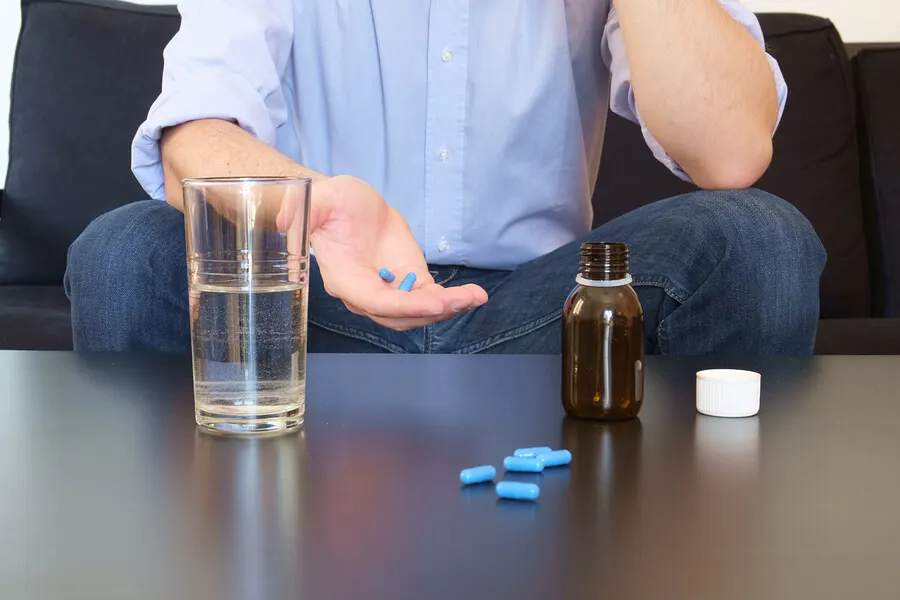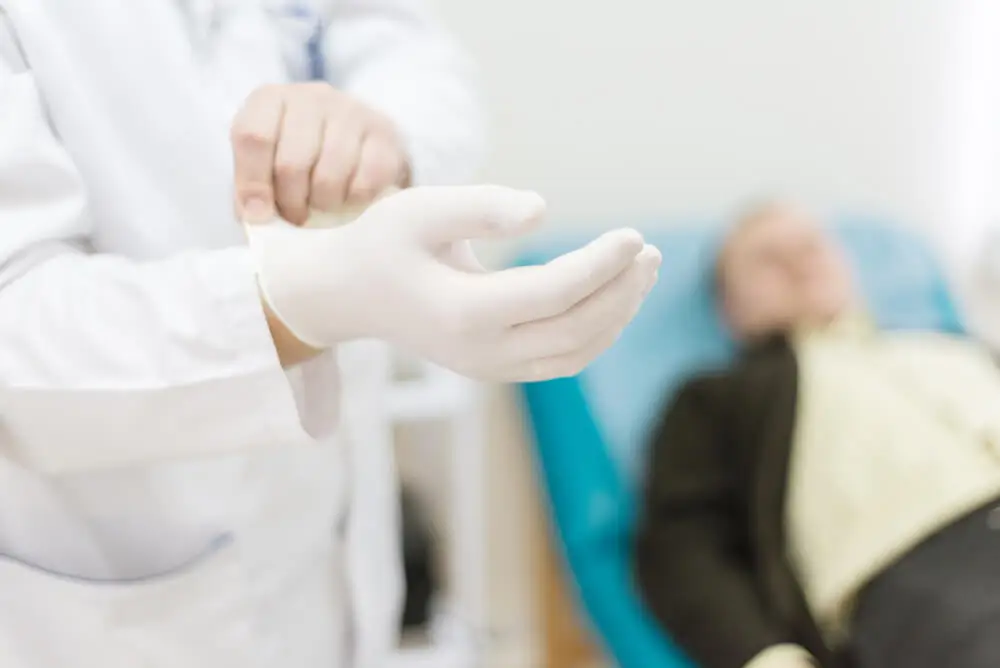Priapism: What Is It, What Causes It, and How Is It Treated?


Reviewed and approved by the doctor Mariel Mendoza
The causes of priapism may be due to drugs for the treatment of erectile dysfunction, substance use (alcohol or drugs) or certain conditions and injuries.
Although rare, in certain cases it constitutes an emergency that requires immediate attention. If not resolved in a timely manner, it leads to permanent erectile dysfunction.
What is priapism?
Priapism is a prolonged erection lasting more than four hours. It may be due to sexual stimulation, but not necessarily.
This term comes from a god of Greek mythology: Priapus, son of Dionysus and Aphrodite. According to legend, Priapus was born with an enormous member. He was the symbol of fertility or male sexuality.
Priapism is not a very common condition. It is more likely in men over the age of 30. Although, it can occur in children with sickle cell disease.
Its incidence is estimated at 1.5 cases per 100,000 people per year. In men over 40 years of age, the proportion increases slightly, reaching 2.9 cases per 100,000.
According to some research, this problem is more common in recent years, due to the excessive or inadequate use of drugs for the treatment of erectile dysfunction, such as sildenafil.
We think you may also like to read this article: Penis Rings: How to Use Them Correctly
Types and symptoms
The symptoms of priapism vary according to the type. In this regard, it’s noted that it can be ischemic and non-ischemic, depending on whether there is difficulty in draining or emptying the corpora cavernosa, or excess blood flow to the penis.
1. Ischemic priapism
Ischemic priapism, also called veno-occlusive or low flow, is the most common form of this condition. It’s caused by the inability or difficulty of venous blood to leave the penis due to an obstruction or a smooth muscle contraction problem.
At the same time, the inflow of arterial blood is also reduced, which can cause ischemia of the corpora cavernosa (hence its name). In addition, if prolonged over time, it leads to fibrosis, as the accumulated blood loses oxygenation and acidosis is increased.
Symptoms of ischemic priapism include the following:
- A prolonged erection
- Worsening pain
- A stiff penile shaft with soft glans penis

2. Non-ischemic priapism
This is also called high-flow priapism is less frequent. Unlike the previous one, this is due to excess blood flow into the corpora cavernosa, which is greater than the outflow.
This can occur due to a blow or injury. However, because the blood that accumulates is richer in oxygen, there is no risk of ischemia.
Its symptoms include the following:
- A prolonged erection.
- The penile shaft is not completely rigid.
- It’s less painful.
Like this article? We think you may also like to read: How to Help Improve Your Partner’s Erection
The causes of priapism
Priapism is usually secondary to an alteration of the hemodynamic mechanisms that contribute to a decrease in blood volume within the corpora cavernosa or detumescence. In turn, the problem may be related to the blood vessels, muscles, or nerves.
And although it’s not possible to know the root cause in some cases, there are several factors, and even conditions, that may play a role in this problem. These include the following.
Certain diseases and conditions
Recurrent priapism occurs frequently in men with sickle cell disease and, to a lesser extent, with other blood disorders: leukemia, multiple myeloma, and thalassemia.
Pathologies that can be associated with priapism also include the following:
- Cancer of the penis, bladder, prostate, or rectum.
- Neurological diseases such as encephalopathy and multiple sclerosis.
- Infectious diseases like mumps and malaria.
- Inflammation like prostatitis and thrombophlebitis.
- Other disorders such as gout, amyloidosis, and Fabry disease.
Medications
An episode of priapism can be triggered as a side effect of some medications used to treat various pathologies and disorders. In this regard, the following are mentioned:
- Anticoagulants, such as warfarin and heparin.
- Other drugs used in the treatment of erectile dysfunction.
- Anxiolytics, antidepressants, and drugs for psychotic disorders.
- Androgens and other hormones: testosterone, gonadotropin-releasing hormone.
- Injection of vasoactive substances: it is pointed out in studies as one of the first causes of priapism.
- Antihypertensives, including calcium antagonists, which can produce a venoocclusive effect, and alpha-blockers.
Injuries
Trauma and injuries to the penis, perineum, or pelvis, in some cases, originate from fistulas, causing an abnormal flow of arterial blood to the corpus cavernosum. Likewise, injuries to the spinal cord can affect the mechanisms of erection, causing the bulbocavernosus reflex to be lost.
Other causes
Priapism can also be due to:
- Excessive alcohol consumption.
- The ese of drugs, such as cocaine and heroin.
- Bites from spiders and other arachnids, such as scorpions.
Diagnosis and treatment
In diagnosing priapism, the physician will look for differences in symptoms. For example, in the case of ischemic priapism, the erection is painful. Also, the patient may appear agitated. In non-ischemic priapism, the penis appears to be in a state of incomplete erection.
By asking questions, doctors will obtain a history of the situation. And other studies will complement the diagnosis. These include blood gas analysis, to know whether the cavernous space is full of arterial or venous blood and whether there is hypoxia and acidosis. They may also perform Doppler ultrasound and selective arteriography.
Although the purpose of treatment of one or the other type of priapism may be similar, the mechanisms of action differ. This even includes the urgency of care. Venoocclusive or ischemic priapism requires immediate action and slightly more invasive measures.
In this order of ideas, to promote the outflow of blood from the corpora cavernosa, you can administer a potent analgesic together with the application of local cold. They’ll also administer subcutaneous terbutaline.
If tumescence persists, a medical technician will perform aspiration with a puncture in the distal portion of a cavernous body. They’ll drain the blood until bright red arterial blood comes out.
If the blood doesn’t drain naturally because it’s too thick, they’ll wash it with a physiological saline solution. And if the erection reappears, in addition to a new aspiration, they’ll intracavernously inject an alpha-adrenergic agonist. When the erection lasts a long time, one must pop the fistulas to allow drainage.
In some cases of non-ischemic priapism, treatment may not be necessary, since it doesn’t usually lead to complications. At most, the aim is to decrease the flow by selective embolization or other procedures in order to achieve detumescence.

When to go to the doctor
Sometimes an episode of priapism resolves itself on its own. However, it can also constitute an emergency. Depending on the severity, it can even leave after-effects, such as permanent erectile dysfunction.
When an erection lasts for several hours, you should go immediately to an emergency care center. The physician will then determine what type of priapism it is, and any subsequent actions.
On the other hand, recurrent episodes require preventive treatment. As a measure, the physician may advise suspending some medication. Likewise, the person should avoid consuming medications or substances that may affect him/her.
All cited sources were thoroughly reviewed by our team to ensure their quality, reliability, currency, and validity. The bibliography of this article was considered reliable and of academic or scientific accuracy.
- Altman A, Seftel A, Brown S, Hampel N. Cocaine associated priapism. J Urol. 1999; 161: 1817-1818.
- Aoyagi T, Hayakawa K, Miyaji K, Ishikawa H, Hata M. Sildenafil induced priapism. Int J Impot Res. 2001; 13: 357-359.
- Bschleipfer T, Hauck E, Diemer T, et al. Heparin-induced priapism. Int J Impot Res. 2001; 13: 357-359.
- Bugarín González R, Casais Gude J, Alonso López C, et al. Priapismo. JOUR Medicina Integral. 2002; 40(8); 338 – 342.
- Capua Sacoto C, Lujan Marco S, Morales Solchaga G, et al. Cáncer de pene: Nuestra experiencia en 15 años. Actas Urol Esp. 2009; 33(2): 143-148.
- Eland I, Van der Lei J, Stricker B, Sturkenboom M. Incidence of priapism in the general population. Urology. 2001; 57: 970-972.
- Madrid F, Díez A, Madrinero C, Rivas J, Delgado M, García J. Priapismo secundario a la administración de testosterona en el tratamiento de la pubertad retardada. Arch Esp Urol. 2001; 54; 703-705.
- Miguélez E, Rodríguez L, Sáenz I. Priapismo. Actualización en Andrología. 1998; 24: 17-32.
- Pagà Carbonell J, Peri L. Priapismo de alto flujo y larga evolución: Presentación de un caso y propuesta de algoritmo diagnóstico y tratamiento. Actas Urol Esp. 2005; 29(7): 708-710.
- Zúñiga P, Martínez C, González L, Rendón D et al. Sickle cell disease: A diagnosis to keep in mind. Rev. chil. pediatr. 2018; 89(4): 525-529.
- Rodríguez, R., Et al. (2015). Priapismo. Actas Urol Esp vol.29 no.10. https://scielo.isciii.es/scielo.php?script=sci_arttext&pid=S0210-48062005001000008
This text is provided for informational purposes only and does not replace consultation with a professional. If in doubt, consult your specialist.








